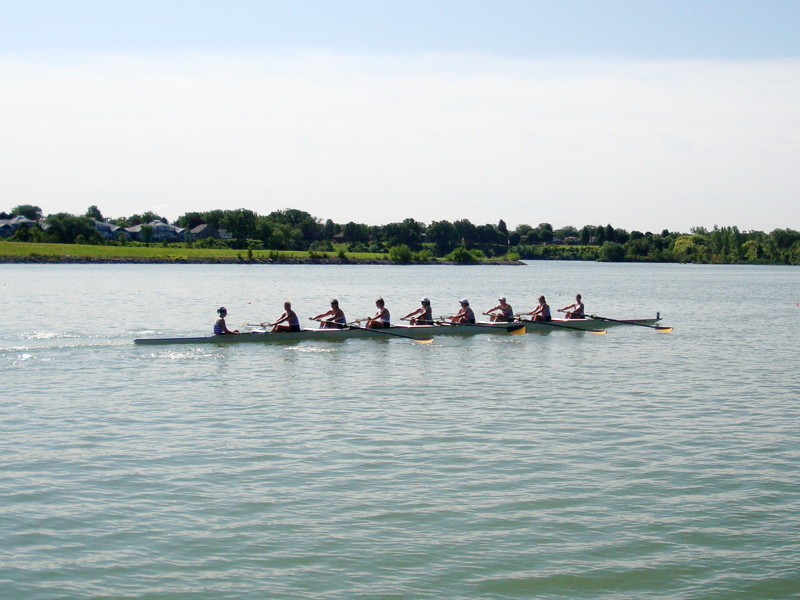Trying to win it all without losing everything
Rowin’ ain’t easy, but is it worth it? One competitive athlete describes the ups and downs of life on the water
Part one of a two-part series.
The big joke in Canada is that people only care about amateur sports once every four years, and then they only care for about two weeks.
I am talking about the summer Olympics (not to shun the winter Olympics, but rowing is a summer sport), when every four years athletes from around the world gather to compete.
The problem is that Olympic athletes are not born, they are trained. They train for years and years before a national team coach even knows their name. Then with some more years and years of training, they may be ready for the world stage.
This year I took on the challenge of training for the Canada Summer Games (CSG) – not the Olympics by any means, but a start nonetheless.
The Canada Summer Games is a multi-sporting event held every four years in the summer, where athletes from all around Canada come to compete for their provinces. Just like the Olympics, the Canada Games are fun to watch; what most viewers don’t realize is the time and energy required for the eight-minute races they watch.
My sport (for the time being) is rowing. I started in the spring of 2007, but the real Canada Games journey started in the fall 2008.
Any rower under the age of 21 had the opportunity to train in the winter for CSG and then try out for the games in the spring. Athletes were given the opportunity to train with provincial coaches. Training didn’t ensure that you would make the team and go to the CSGs, but it did mean you were getting proper training and training with all other CSG-eligible athletes.
The members of the CSG training squad started winter training (this is done on rowing machines called ergs, and in the weight room) in November, with six training sessions a week. In January we moved up the intensity of the workouts (making them longer and harder) and the number of training sessions to eight per week. A training session can last anywhere from an hour and a half to two hours, depending on the workout. We train everyday (expect Sundays).
In February we decided to leave the blistering cold winter and the mundane routine of the erg and head to Florida, where the coaches held a Winter Training Camp during university reading week.
Training camp was great. Every rower got to row a single scull and we trained twice a day. Not only was the camp in Florida, but it gave everyone a chance to work on skills needed in the spring, when we were back on the water.
By the time spring rolled around we were training 10 times a week. The fabulous spring flooding delayed us from getting on the water for a month, and almost destroyed our club. But once we were back on the water I soon remembered why I had spent all those painful hours on the erg.
During the first weekend in June, we loaded up the boats and headed for Regina for our first regatta of the year, the Regina Sprints. The team took no firsts, but had some good second and third-place finishes. Regina was a great opportunity and showed us how much work we needed to get done before selections for CSG , which were to take place at the end of June.
With selection camp right around the corner, our entire group (university and high school-aged athletes) took off school for the year. The intensity really picked up and there was only one thing people were focused on – making the team.
Be sure to pick up the Sept. 3 edition of The Uniter to find out all about selection camp and the 2009 Canada Summer Games.
Published in Volume 63, Number 30 of The Uniter (August 13, 2009)







